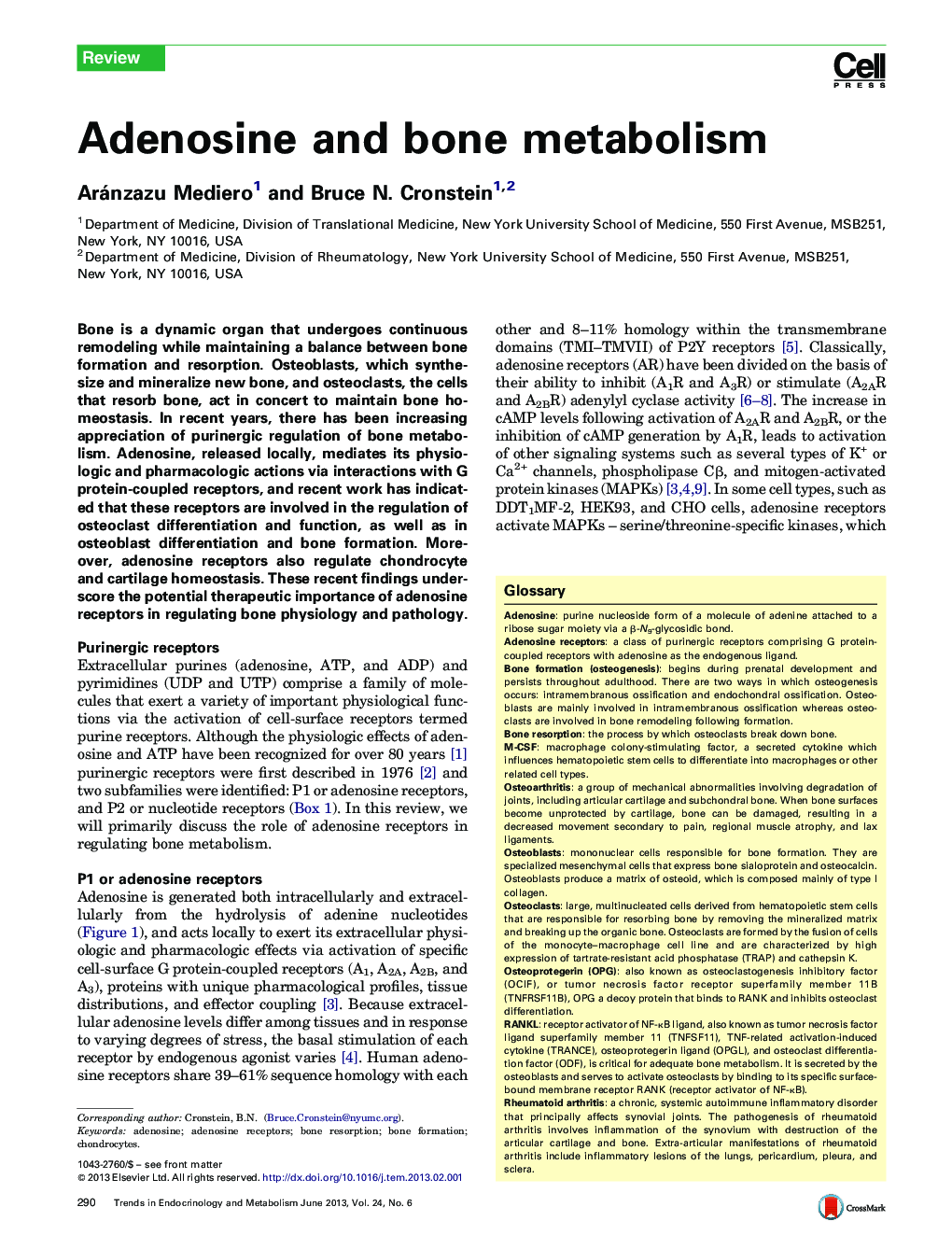| Article ID | Journal | Published Year | Pages | File Type |
|---|---|---|---|---|
| 2810623 | Trends in Endocrinology & Metabolism | 2013 | 11 Pages |
Bone is a dynamic organ that undergoes continuous remodeling while maintaining a balance between bone formation and resorption. Osteoblasts, which synthesize and mineralize new bone, and osteoclasts, the cells that resorb bone, act in concert to maintain bone homeostasis. In recent years, there has been increasing appreciation of purinergic regulation of bone metabolism. Adenosine, released locally, mediates its physiologic and pharmacologic actions via interactions with G protein-coupled receptors, and recent work has indicated that these receptors are involved in the regulation of osteoclast differentiation and function, as well as in osteoblast differentiation and bone formation. Moreover, adenosine receptors also regulate chondrocyte and cartilage homeostasis. These recent findings underscore the potential therapeutic importance of adenosine receptors in regulating bone physiology and pathology.
► Adenosine and its receptors are critical regulators of osteoclast differentiation. ► Adenosine A2B receptor is critical for osteoblast differentiation but the other three adenosine receptors also play a major role in bone formation. ► Adenosine A2A receptor may be an important regulator of cartilage loss.
